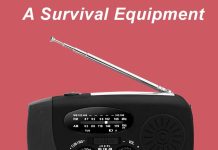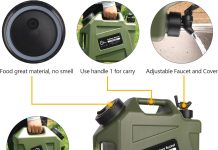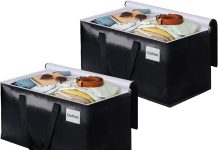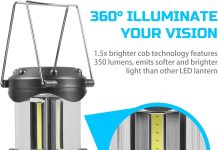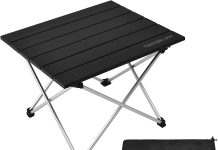Maintaining camping equipment can ensure that it stays in top condition and lasts for many outdoor adventures. From tents and sleeping bags to backpacks and cooking gear, there are several essential steps to keeping your camping gear in the best shape possible. In this article, we will share valuable tips and tricks on how to properly care for your camping equipment, so you can enjoy the great outdoors worry-free.
Cleaning and drying
Cleaning your camping equipment
Cleaning your camping equipment is an essential part of proper maintenance. After each camping trip, it’s important to clean all your equipment thoroughly to remove dirt, debris, and any potential contaminants. Start by emptying and cleaning your cooler, ensuring it is free from any leftover food or liquids. This will prevent mold and unpleasant odors from developing.
Next, clean your stove and cooking utensils. Scrub off any food residue and grease, making sure to remove all traces of oil and soot. Use warm water and mild soap to clean pots, pans, and other cooking tools. For tougher stains, you may need to use a scrub brush or a non-abrasive cleaner.
For your dishes and cutlery, rinse them well with water and use a biodegradable camping dish soap to clean them thoroughly. Scrub away any food particles and rinse again with clean water.
Don’t forget to wipe down your camping chairs, tables, and any other furniture you brought with you. This will help maintain their cleanliness and prolong their lifespan.
Drying your camping equipment
After cleaning your camping equipment, it’s crucial to let them dry thoroughly before storing them. This will prevent the growth of mold and mildew. Start by air-drying your camping gear outside, preferably under direct sunlight. Hang your sleeping bags, tents, and clothing on a clothesline or draped over a branch, ensuring they are fully extended to allow for proper airflow.
For small items like utensils or cooking tools, place them on a clean towel or drying rack to air-dry. Ensure they are completely dry before packing them away to prevent moisture from being trapped inside.
By thoroughly cleaning and drying your camping equipment after each trip, you not only ensure their longevity but also maintain their functionality and hygiene for future adventures.
Tent maintenance
Setting up your tent properly
Properly setting up your tent is crucial for its stability, comfort, and longevity. When selecting a campsite, choose an area free from sharp rocks, branches, or any other potential hazards that could damage the tent floor or puncture the fabric. Clear the area of debris and use a groundsheet or footprint to protect the tent floor.
Follow the manufacturer’s instructions when pitching your tent. Take your time to secure all stakes and guy lines properly, ensuring a taut and sturdy structure. This will help prevent sagging, flapping, or collapsing during inclement weather conditions.
Remember to properly ventilate your tent by keeping windows or vents open, especially during humid or rainy weather. This will prevent condensation buildup and maintain a comfortable interior environment.
Repairing tent damages
Even with the utmost care, tents may sometimes incur damages during your camping adventures. It’s important to address any tears, rips, or broken poles as soon as possible to prevent further deterioration.
Carry a tent repair kit with you, containing adhesive patches, seam tape, and spare tent pole sections. This will allow you to quickly repair minor damages on the go. For larger tears, consider using a fabric patch or seeking professional repair services.
Before packing away your tent, inspect it thoroughly for any damages. Clean and dry the tent before making any repairs to ensure the best adhesion. By promptly addressing damages and making necessary repairs, you can extend the lifespan of your tent and continue to enjoy comfortable and dry nights outdoors.
Cleaning and waterproofing your tent
Cleaning your tent after each camping trip is essential for its maintenance. Use a soft sponge or cloth to wipe down the tent’s exterior, particularly removing any dirt, bird droppings, or tree sap. Avoid using harsh chemicals or abrasive cleaners that could damage the tent’s waterproof coating.
For stubborn stains, use a mild soap solution and gently scrub the affected areas. Rinse the tent thoroughly with clean water and ensure it is completely dry before storing it.
To maintain the tent’s waterproof abilities, it’s important to periodically reapply a waterproofing treatment. Check the manufacturer’s recommendations for the specific product to use, as some tents require a particular type of waterproofing solution. Apply the waterproofing treatment evenly on the rainfly and tent walls, making sure to cover all seams. This will help prolong the tent’s ability to repel water and keep you dry during rainy camping trips.
Properly maintaining your tent through regular cleaning, repairs, and waterproofing will ensure its continued durability and reliability in various weather conditions.
Sleeping bag maintenance
Cleaning your sleeping bag
Cleaning your sleeping bag is essential to maintain its comfort, insulation, and longevity. However, it’s important to note that not all sleeping bags can be machine-washed. Check the manufacturer’s instructions for specific cleaning recommendations.
For down sleeping bags, use a front-loading washing machine on a gentle cycle with a mild detergent specifically formulated for down products. Ensure the sleeping bag is zipped closed and all straps or fastenings are secured. After washing, rinse the sleeping bag thoroughly to remove any soap residue.
For synthetic sleeping bags, use a regular washing machine on a gentle cycle with a mild detergent. Again, ensure the bag is zipped and all closures are secure.
Once cleaned, hang the sleeping bag to air-dry in a cool, shaded area. Avoid direct sunlight, direct heat, or the use of a dryer as these can damage the insulation or the fabric. Occasionally fluff or shake the bag during the drying process to prevent clumping and promote even drying.
Storing your sleeping bag
Properly storing your sleeping bag is just as important as cleaning it. Before storage, ensure the sleeping bag is completely dry to prevent the growth of mold or mildew.
To save space, consider using a storage sack or compression sack specifically designed for sleeping bags. These sacks allow you to compress the sleeping bag into a smaller size without damaging the insulation.
Avoid storing your sleeping bag in a tightly compressed state for extended periods, as this can damage the insulation. Instead, store it in a loose-fitting sack or hang it in a cool, dry place. This will help maintain the loft and fluffiness of the insulation. Additionally, avoid storing the sleeping bag in a damp or humid environment to prevent moisture damage.
By regularly cleaning and properly storing your sleeping bag, you can prolong its lifespan, maintain its insulation properties, and ensure a cozy night’s sleep on your camping adventures.
Cooking equipment maintenance
Cleaning your cooking equipment
Maintaining clean cooking equipment is essential for safe and enjoyable camping meals. After each use, clean your pots, pans, utensils, and plates thoroughly to remove any food residue.
Start by scraping off any leftover food using a spatula or a scrub brush. Avoid using sharp utensils that could damage the non-stick coating of your pots and pans.
Next, wash the items with warm, soapy water. Use a biodegradable camping dish soap to minimize environmental impact. Scrub away any remaining food particles and rinse with clean water.
For stubborn stains or burnt-on food, you may need to soak the cooking equipment in warm, soapy water before scrubbing. Avoid using abrasive sponges or steel wool, as they can damage the cooking surfaces.
Once clean, air-dry your cooking equipment thoroughly before storing it. Ensure there is no residual moisture, as this can lead to rust or unpleasant odors.
Maintaining your camping stove
Your camping stove is an essential piece of equipment, and proper maintenance is crucial to keep it functioning optimally. After each use, clean the stove according to the manufacturer’s instructions.
To clean the burners, use a soft brush or cloth to remove any debris. Pay attention to the burner holes, ensuring they are not clogged. If necessary, use a toothpick or a needle to clear any blockages. Wipe down the stove’s exterior with a damp cloth, and allow it to air-dry thoroughly.
Periodically, inspect the stove’s fuel hose and connections for any signs of wear, cracks, or leaks. If you notice any issues, replace the damaged parts promptly to ensure safe operation.
Store your camping stove in a clean, dry place, protecting it from dust, moisture, and extreme temperatures. Ensure the fuel canisters are stored separately and away from direct sunlight or heat sources.
By cleaning and maintaining your cooking equipment, including your camping stove, you can enjoy delicious meals and safe cooking experiences during your camping trips.
Campfire essentials
Setting up and extinguishing campfires
Campfires are a quintessential part of the camping experience, providing warmth, ambiance, and a gathering place. However, it’s essential to set up and extinguish campfires responsibly to ensure safety and minimize environmental impact.
Select a designated fire ring or an existing fire pit when setting up your campfire. Clear the area of any flammable materials, such as dry leaves and branches, and ensure there is sufficient clearance from trees or tents.
When starting a campfire, use dry and seasoned firewood. Avoid burning green or wet wood, as it produces excessive smoke and contributes to air pollution. Arrange the wood in a teepee or log cabin structure, allowing for airflow and efficient burning.
Once your campfire is burning, never leave it unattended and practice proper fire safety precautions. Keep a bucket of water or sand nearby to extinguish the fire if necessary.
When extinguishing your campfire, allow the wood to burn completely down to ash. Use a shovel or a stick to spread out the ashes and then pour water over the fire pit, ensuring the fire is completely out. Stir the ashes and water together to cool them down, and continue adding water until all heat is gone.
Fire safety precautions
Practicing fire safety precautions is essential to prevent accidents and minimize the risk of wildfires. Always follow these guidelines when having a campfire:
- Check local fire regulations and restrictions before starting a campfire. Some areas may have bans on open fires during dry seasons or high fire danger periods.
- Keep a safe distance from tents, trees, and other flammable objects. Ensure there is ample clearance of at least 10 feet in all directions.
- Never leave a campfire unattended, even for a short period. Assign a responsible person to monitor the fire at all times.
- Keep a bucket of water or sand nearby to extinguish the fire if needed. Do not rely on dirt to extinguish the fire completely.
- Avoid using accelerants, such as gasoline or lighter fluid, to start or boost your campfire. This can lead to uncontrollable flames and dangerous situations.
- When cooking over a campfire, use long-handled utensils and maintain a safe distance to prevent burns or accidents.
- Observe any fire bans or restrictions in the area and respect any designated fire-free zones.
- Finally, always ensure your campfire is completely extinguished before leaving the campsite or going to sleep. Cold ashes should be cool to the touch and free from any heat or smoke.
By following these campfire essentials and fire safety precautions, you can enjoy the warmth and camaraderie of campfires while minimizing any negative impacts on the environment and ensuring the safety of yourself and others.
Clothing and footwear care
Cleaning and drying your camping clothes
Proper care of your camping clothes will not only keep them clean and fresh but also ensure their durability and functionality in various weather conditions. Here’s how to clean and dry your camping clothes effectively:
Start by reading the garment’s care label to check for any specific cleaning instructions. If a washing machine is available, select a gentle cycle and use a mild detergent suitable for outdoor fabrics. Be sure to close all zippers, fastenings, and Velcro before placing the clothes in the machine.
If hand-washing is necessary, fill a basin or sink with cool or lukewarm water and add a small amount of mild detergent. Gently agitate the clothes in the soapy water, paying extra attention to any stains or heavily soiled areas. Rinse thoroughly with clean water.
Avoid using fabric softener, as it can compromise the breathability and moisture-wicking properties of outdoor garments. Instead, line-dry your camping clothes whenever possible. Hang them on a clothesline or over a railing, ensuring proper ventilation and avoiding direct sunlight. For faster drying, choose a spot with good air circulation.
In situations where immediate drying isn’t possible, ensure the clothes are completely dry before folding or packing them away. Damp or wet clothing can develop mildew or unpleasant odors, and may even lose some of their insulating properties.
Caring for hiking boots
Proper care and maintenance of your hiking boots will significantly extend their lifespan and ensure lasting comfort and support on the trails. Follow these tips to care for your hiking boots:
- After each hike, remove the laces and any debris stuck in the outsole or lugs. Use a soft brush or an old toothbrush to clear away dirt or mud. Avoid using excessive force, as it can damage the boots’ materials.
- To clean the boots, use a mild soap or specialized boot cleaner and a brush. Gently scrub the uppers, paying attention to any stained or scuffed areas. Rinse with clean water and wipe the boots thoroughly with a clean towel.
- It’s important to dry your hiking boots properly to prevent them from losing shape or developing odors. Start by removing the insoles and laces. Stuff the boots loosely with crumpled newspaper or a clean, dry cloth to absorb moisture and help them maintain their shape.
- Allow the boots to air-dry in a cool, shaded area, avoiding direct heat or sunlight. Do not use a dryer or any artificial heat source, as it can warp or shrink the boots’ materials. Ensure the boots are completely dry before storing them to avoid mold or mildew formation.
- Regularly inspect the boots for any signs of wear, such as loose threads, separated soles, or damaged eyelets. Address any issues promptly to prevent further damage and ensure optimal performance on your next hike.
By properly cleaning and drying your camping clothes and caring for your hiking boots, you can maintain their durability, functionality, and overall comfort throughout your outdoor adventures.
Backpack maintenance
Cleaning your backpack
Your backpack is a crucial piece of camping equipment, carrying and protecting your belongings throughout your adventures. Proper cleaning and maintenance will ensure its longevity and functionality. Here’s how to clean your backpack effectively:
Before cleaning, remove all items from the backpack and empty all pockets and compartments. Shake out any loose dirt, debris, or crumbs.
For backpacks made of nylon or polyester, use a mild detergent and warm water solution. Gently scrub the exterior with a soft brush or sponge, paying extra attention to stained or heavily soiled areas. Avoid using harsh chemicals or abrasive cleaners that could damage the backpack’s fabric or coatings. For backpacks with a detachable frame, remove it before cleaning.
For the backpack’s interior, shake out any loose dirt or debris. If necessary, use a vacuum cleaner with a brush attachment to remove finer particles. Allow the backpack to air out and dry before proceeding with the cleaning.
For backpacks with removable hip belts or shoulder straps, follow the manufacturer’s instructions for removing and cleaning these components. Clean them separately, using a mild detergent if needed, and rinse thoroughly with clean water.
Once cleaned, rinse the backpack thoroughly with clean water to remove any soap residue. Wipe down the zippers and buckles with a damp cloth to remove any dirt or debris.
Allow the backpack to air-dry in a cool, shaded area. Ensure it is fully dry before storing to prevent mold or mildew growth. It’s important to keep the backpack’s shape during the drying process. Stuff the interior with crumpled newspaper or towels to help maintain its form.
Checking and repairing straps and zippers
Inspecting and maintaining your backpack’s straps and zippers is crucial for a comfortable and functional carrying experience. Here’s how to check and repair these components:
- Start by inspecting the backpack’s shoulder straps, hip belt, and chest strap. Check for any signs of wear, such as frayed edges, loose stitching, or damaged buckles. Ensure all straps are securely attached and the buckles are in good working condition. If you notice any issues, address them promptly by obtaining replacement parts or seeking professional repair.
- Check the backpack’s zippers for smooth operation. Use a zipper lubricant or a mild wax-based product to keep the zippers running smoothly. Avoid using petroleum-based lubricants, as they can damage the zipper’s teeth or pull tabs. If a zipper is stuck or not functioning properly, gently manipulate it back and forth to release any debris or obstructions. Be careful not to force or yank the zipper, as it may cause further damage.
- If your backpack has a frame or a suspension system, make sure all connections are secure and in good condition. Tighten any loose screws or fasteners, and replace any damaged or missing hardware.
By regularly cleaning your backpack and checking and repairing straps and zippers, you can ensure its durability, comfort, and practicality for many camping adventures to come.
First aid kit upkeep
Checking and restocking your first aid supplies
Your first aid kit is a vital component of your camping gear, providing essential medical supplies and equipment to handle minor injuries and emergencies. Regularly checking and restocking your first aid supplies will ensure you are prepared for any situation. Follow these guidelines:
- First, empty the entire contents of the first aid kit onto a clean surface. Check each item individually for expiration dates, discoloration, damage, or signs of deterioration. Dispose of any expired medications, worn-out bandages, or damaged items following proper disposal guidelines.
- Restock any missing or used items, ensuring you have an adequate supply for your camping needs. Common items to include in your first aid kit are adhesive bandages of various sizes, gauze pads, adhesive tape, antiseptic wipes, antibiotic ointment, pain relievers, tweezers, and scissors. Consider adding specific items based on your camping activities and any personal medical needs.
- Check the functionality of any medical equipment, such as a thermometer or a CPR mask. Test batteries in electronic devices, such as a digital thermometer or a flashlight, and replace them if necessary.
- After restocking your first aid supplies, organize them neatly and securely inside the first aid kit. Ensure the kit is easily accessible and clearly labeled. Store the first aid kit in a cool, dry place, away from direct sunlight or extreme temperatures.
- Periodically review the contents of your first aid kit and update it according to any changes in your camping needs or personal medical requirements. Ensure everyone in your camping group knows the location of the first aid kit and understands how to use its contents in case of an emergency.
By regularly checking and restocking your first aid supplies, you can ensure the safety and well-being of yourself and your camping companions during your outdoor adventures.
Water purification maintenance
Cleaning and replacing water filters
Maintaining clean and functional water filters is essential for ensuring safe drinking water when camping. Regularly cleaning and replacing water filters will minimize the risk of waterborne illnesses. Here’s how to maintain your water filters:
- Start by reading the manufacturer’s instructions for your specific water filter system. Follow the recommended cleaning and maintenance procedures to ensure effective and safe operation.
- After each camping trip, disassemble the water filter system and remove the filter element. Rinse the filter element thoroughly with clean water, removing any dirt or debris. Use a soft brush or sponge to gently scrub the filter’s surface, ensuring thorough cleaning. Avoid using bleach or harsh chemicals unless specified by the manufacturer.
- If your water filter system has replaceable filter cartridges, follow the manufacturer’s recommendations for the frequency of replacement. Some filters may require replacement after a certain number of gallons filtered or a specific time period. It’s important to adhere to these guidelines to ensure optimal filtration performance.
- When replacing the water filter cartridge, ensure the new filter is compatible with your specific system. Follow the manufacturer’s instructions for installation, ensuring a proper seal and secure connection. Discard used filter cartridges following the manufacturer’s disposal guidelines.
Maintaining purification tablets
Purification tablets are a portable and effective method for treating water when camping, particularly in situations where carrying a water filter may not be practical. Proper maintenance and storage of purification tablets ensure their efficacy when needed. Follow these guidelines:
- Check the expiration date of your water purification tablets. Most tablets have a shelf life of around two to five years, depending on the brand and type. Expired tablets may lose their effectiveness in killing bacteria or viruses, so it’s crucial to replace them before they expire.
- Store your purification tablets in their original packaging or a designated container to protect them from moisture and extreme temperatures. Ensure the container is tightly sealed to prevent moisture or air exposure.
- Keep the container of purification tablets in a cool, dry place, away from direct sunlight or heat sources. Avoid storing them in a volatile environment, such as near chemicals or strong odors, as they can influence the tablets’ stability.
- Always follow the manufacturer’s instructions when using purification tablets. Different brands and types may vary in dosage and treatment time. Generally, it’s recommended to wait the specified time before drinking the treated water to allow for proper disinfection.
- Periodically check the appearance and integrity of your purification tablets. If they appear discolored or have changed in texture, it’s best to replace them, as these changes could indicate reduced efficacy.
By cleaning and replacing water filters, as well as properly maintaining purification tablets, you can ensure a safe and reliable source of drinking water during your camping trips.
General equipment storage
Properly packing and storing your camping gear
Properly packing and storing your camping gear after each trip will help maintain its longevity and ensure it’s ready for your next adventure. Follow these tips for effective gear storage:
- Clean and dry your camping gear thoroughly before packing it away. Clean your tents, sleeping bags, cooking equipment, and backpacks as discussed earlier in this article.
- Disassemble any camping furniture and ensure it is clean and dry. Store tables, chairs, and other furniture in their designated carrying cases or in a clean, dry container to prevent damage or excessive wear.
- When packing, start with the larger and more rigid items at the bottom of your storage containers or bags. Place heavier equipment, such as cooking pots or stoves, at the bottom to provide a stable base.
- If possible, store your camping gear in designated storage containers or bags that provide protection against dust, moisture, and pests. Clear plastic containers with secure lids are ideal as they allow for easy identification of contents and protect against pests. For smaller items, consider using zippered storage bags or smaller containers for better organization.
- Avoid overpacking or compressing your gear excessively, as this can cause damage to the equipment. Allow for proper airflow and ensure there is sufficient space for each item.
- Label your storage containers or bags with a list of their contents. This will help you locate specific gear easily when you need it and prevent unnecessary digging and unpacking.
Preventing mold and pest infestation
Proper storage techniques can prevent mold growth and pest infestation, extending the lifespan of your camping gear. Follow these tips to keep your equipment free from mold and pests:
- Ensure your camping gear is completely dry before storing it to prevent mold growth. This includes tents, sleeping bags, cooking equipment, and any other fabric-based or moisture-prone items. If necessary, air-dry the gear for an extended period or use a fan to assist with drying.
- Before storing tents, sleeping bags, and clothing, check for any signs of mold or mildew. If any items are affected, address the issue promptly by cleaning them thoroughly with a solution of mild detergent and water. Use a specialized mold remover or a mixture of vinegar and water for stubborn mold stains.
- When storing fabric-based items, consider using desiccant packets or moisture-absorbing products to maintain a dry environment. These can be placed inside storage containers or bags to help prevent moisture buildup.
- Avoid storing camping gear in areas prone to moisture, such as basements or damp garages. Instead, choose a cool, dry location, preferably with adequate ventilation. A climate-controlled storage area is ideal if available.
- Regularly inspect stored gear for any signs of pests, such as insects or mice. Check for chewed fabric, droppings, or nesting materials. If pests are present, remove the affected items and thoroughly clean the storage area. Consider using pest-control methods, such as traps or repellents, if necessary.
By properly packing, storing, and taking preventive measures against mold and pests, you can ensure your camping gear remains in excellent condition and ready for your next outdoor adventure.
With these comprehensive guidelines on maintaining your camping equipment, you can prolong their lifespan, maximize their functionality, and ensure safe and enjoyable camping experiences. Remember, regular cleaning, proper storage, and prompt repairs are the keys to preserving your gear’s durability and performance. Happy camping!





